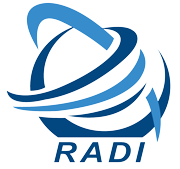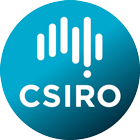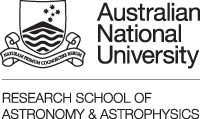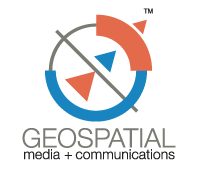HD-3: 3D and 4D SAR Tomography: From Basics to Applications
Fabrizio Lombardini
Abstract:
Thanks to the capability of providing direct physical measurements, synthetic aperture radar (SAR) Interferometry allowing generation of topographic maps, accurate localization of ground scatterers, and monitoring of possible displacements to a mm/year order, is one of the techniques that have most pushed the applications of SAR to a wide range of scientific, institutional and commercial areas, and it has provided significant returns to our society in terms of improvements in the risk monitoring.
SAR images relative to a same scene and suitable for interferometric processing are today available for most of the Earth, and their number is exponentially growing. Archives associated to SAR spaceborne sensors are filled by data collected with time and observation angle diversity (multipass-multibaseline data); moreover, current system trends in the SAR field involve clusters of cooperative formation-flying satellites with capability of multiple simultaneous acquisitions (bistatic and multistatic tandem SAR systems), airborne systems with multibaseline acquisition capability in a single pass are also available, and unmanned air vehicles with capability of differential monitoring of rapid phenomena are being experimented. In parallel, developments are underway of processing techniques, evolutions of the powerful SAR Interferometry, aimed at fully exploiting the information lying in such huge amount of multipass-multibaseline data, to produce new and/or more accurate measuring functionalities.
Focus of this tutorial is on processing methods that, by coherently combining multiple SAR images at the complex (phase and amplitude) data level, differently from phase-only Interferometry, allow improved or extended imaging and differential monitoring capabilities, in terms of accuracy and unambiguous interpretation of the measurements.
The tutorial will cover interrelated techniques that have been shaping in the recent years an emerging branch of SAR interferometric remote sensing, that can be termed Tomographic SAR Imaging, which is playing an important role in the development of next generation of SAR products and will enhance the application spectrum of SAR systems in Earth observation.
These techniques are:
- Multibaseline Interferometry for the functionality of layover scatterers elevation separation, to locate different scatterers interfering in the same pixel in complex surface geometries causing signal garbling;
- Multibaseline full 3D Tomography of volumetric scatterers, to provide a profiling of the scattering distribution also along the elevation direction for unambiguous extraction of physical and geometrical parameters in geophysical structures with vertical stratification sensed by low frequency SARs;
- Multipass 4D (3D+velocity) Differential Tomography of multiple layover scatterers with slow deformation motions, a recent and very promising multidimensional imaging mode crossing the bridge between Differential Interferometry and Multibaseline Tomography.
Basic concepts, signal models and processing techniques of coherent SAR data combination for 3D/4D Tomographic SAR Imaging will be described in the array processing i.e. spatial spectral estimation framework, Fourier based, and of super-resolution kind (adaptive, a priori information-based, and model-based). A number of experimental results obtained with real data, multibaseline single-pass and multipass airborne, and multipass spaceborne, in X-, C-, L-, and P-band, over infrastructure, urban and forest areas, will be presented to show current achievements of these emerging techniques, and recent new trends in the area discussed.
A general basic knowledge of standard SAR Interferometry signal processing is useful for fruitfully attending the tutorial.
Biography:
Fabrizio Lombardini received the Italian Laurea degree, with honors, in electronic engineering and the PhD degree in telecommunication engineering from the University of Pisa, Italy, in 1993 and 1997, respectively. He was then granted by the EU a Marie Curie Fellowship of the Training and Mobility of Researchers (TMR) Program, which he spent as Postdoctoral Researcher at the Department of Electronic and Electrical Engineering of University College London, U.K., from 1998 to 1999. Then, he joined the Department of Information Engineering of University of Pisa, where he currently holds the position of Assistant Professor. Since 2011 he is also Consultant at the National Laboratory of Radar and Surveillance Systems of the Italian National Interuniversity Consortium for Telecommunications (CNIT-RaSS). He is IEEE Member since 1993 and Senior Member since January 2003.
He has given lectures at universities and institutions in Italy and abroad, has organized and chaired 14 special sessions on SAR multibaseline/multichannel interferometry/three-dimensional techniques at international conferences (including IEEE IGARSS'05, IGARSS'07, IGARSS'08, IGARSS'09, IGARSS'10, and IGARSS'12), has been guest co-editor of the EURASIP Journal of Applied Signal Processing special issue on Advances in Interferometric SAR Processing, and lecturer or co-lecturer of 5 tutorials on SAR tomography and multidimensional SAR imaging at EUSAR'08, IEEE RadarCon09, IEEE IGARSS'10, IGARSS'11, and IGARSS'12.
Dr. Lombardini's general interests are in the areas of statistical signal processing, estimation and detection, super-resolution spectral analysis, array processing, and performance bounds evaluation, with application to radar systems and SAR environmental remote sensing. In particular, his research interests include multisensor data fusion and radar detection in non-Gaussian clutter, multibaseline and multifrequency interferometric SAR algorithms and systems, both cross- and along-track, 3D SAR tomography, and differential SAR interferometry. He recently originated the new interferometric mode of differential SAR tomography (4D SAR imaging), and is engaging research on coherent localization in RFID systems.
Materials:
Handout of about 80 viewgraphs, with concepts, models, algorithms, real data results, and list of references.


 IGARSS13
IGARSS13 @IGARSS2013
@IGARSS2013













